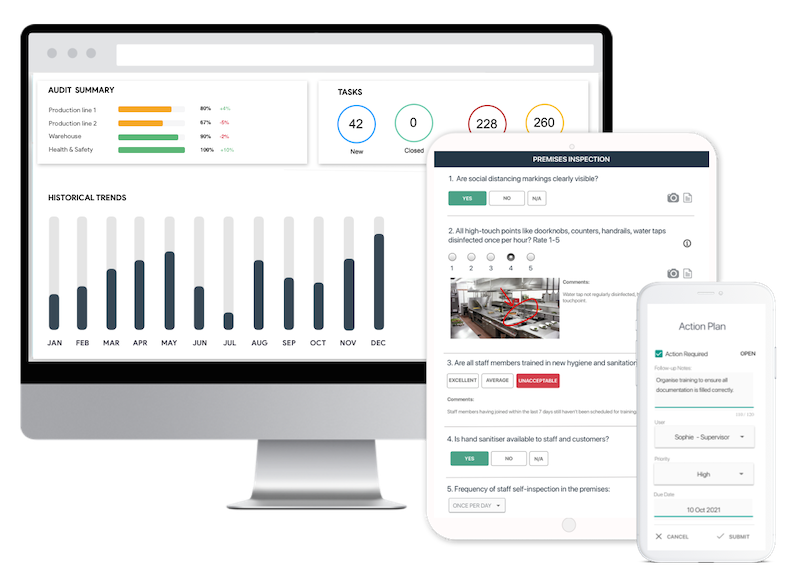- Library ›
- Health & Safety ›
- OSHA Asbestos Self-Inspection Checklist
OSHA Asbestos Self-Inspection Checklist
General
5. Have employees and contract employers and their employees (including housekeeping personnel) received initial awareness or worker training as well as annual refresher training appropriate to their work assignments and is the training material available for employees and regulators to inspect?
|
Photo
Comment
|
Asbestos Time Weighted Averages (TWA)
3. Is employee exposure over 0.5 f/cc TWA and 2.5 f/cc EL prevented in the following job descriptions? •Coupling cutoff in primary asbestos-cement pipe manufacturing •Sanding in primary and secondary asbestos-cement sheet manufacturing •Grinding in primary and secondary friction product manufacturing •Carding and spinning in dry textile processes •Grinding and sanding in primary plastics manufacturing
|
Photo
Comment
|
Controls
3. Are respirators used during installation or implementation of •engineering and work practice controls, •work such as maintenance and repair activities where engineering and work practice controls are infeasible, •all operations where engineering and work practice controls are not yet sufficient to reduce exposures below the TWA and EL, and during emergencies?
|
Photo
Comment
|
Is this sample what you are looking for?
Sign up to use & customise this template, or create your own custom checklist:
Checklist by GoAudits.com – Please note that this checklist is intended as an example. We do not guarantee compliance with the laws applicable to your territory or industry. You should seek professional advice to determine how this checklist should be adapted to your workplace or jurisdiction.
Easy inspection app for your digital checklists
- Conduct inspections anytime, anywhere - even offline
- Capture photos as proof of compliance or areas needing attention
- Instantly generate and share detailed reports after the inspections
- Assign & track follow-up tasks, view historical trends on a centralized dashboard

